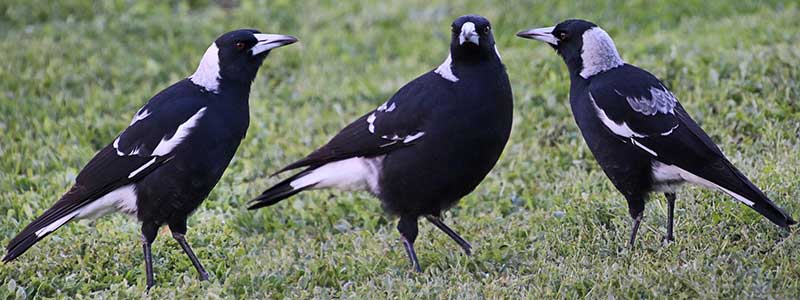Swooping birds
Council would like to remind residents that we share our parklands and reserves with many native bird species, including a small number that display aggressive behaviour at nesting time.
A study has shown that only nine per cent of magpies are aggressive towards people. This small proportion of magpies that swoop on people usually takes place sometime between July and November.
Plovers (masked lapwing) also guard their nests aggressively by swooping from late spring. This is normal defensive behaviour during the breeding season and lasts up to six weeks.
A magpie will only defend its nest within a “defence zone”. This is usually an area within 110m to 150m of the nest.
Residents are encouraged to report any concerns they have about swooping birds in council parks or reserves, so that we can provide information on how to avoid being swooped and look to place warning signs in the location.
There is also a community-run website where residents can provide and receive alerts about swooping magpies Australia-wide that’s well worth checking out.
Some top tips for staying safe include:
- wear a broad-brimmed hat and sunglasses or shelter under an umbrella to protect your face from swooping magpies (painting or sticking large ‘eyes’ on the back of your hat can also deter magpies—but this won’t work for cyclists)
- if a magpie swoops while you are cycling, it will probably stop swooping if you get off your bike and walk
- avoid “defence zones” by taking alternative routes during the breeding season
- if you must enter a “defence zone”, magpies will be less likely to swoop if they are watched constantly, or if people walk in a close group
- waving sticks or umbrellas in the air or attaching a brightly coloured flag on a long pole to your bicycle can stop magpies from swooping.
Being magpie-friendly:
- Don’t fight back if a magpie swoops. Throwing sticks and stones or yelling at a magpie are likely to make it more aggressive next time anyone enters the defence zone around their nest.
Full information on swooping birds can be found on the Department of Environment and Science website
